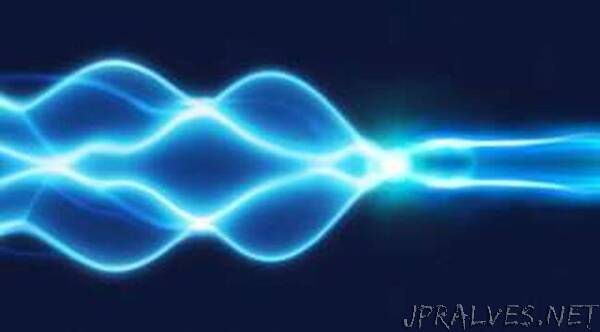
“A counterintuitive facet of the physics of photon interference has been uncovered by three researchers of Université libre de Bruxelles, Belgium. In an article published this month in Nature Photonics, they have put forward a thought experiment that utterly contradicts common knowledge on the so-called bunching property of photons. The observation of this anomalous bunching effect seems to be within reach of today’s photonic technologies and, if achieved, would strongly impact on our understanding of multiparticle quantum interferences.
In a paper published in Nature Photonics, the research team from the Center for Quantum Information and Communication – Ecole polytechnique de Bruxelles of Université libre de Bruxelles, has found an unexpected counter-example to common knowledge on photon bunching.
One of the cornerstones of quantum physics is Niels Bohr’s complementarity principle, roughly speaking the fact that objects may behave either like particles or like waves. These two mutually exclusive descriptions are well illustrated in the iconic double-slit experiment, where particles are impinging on a plate containing two slits. If the trajectory of each particle is not watched, one observes wave-like interference fringes when collecting the particles after going through the slits. On the contrary, if the trajectories are watched, then the fringes disappear and everything happens as if we were dealing with particle-like balls in a classical world. As coined by physicist Richard Feynman, the interference fringes originate from the absence of which-path information, so that the fringes must necessarily vanish as soon as the experiment allows us to learn that each particle has taken one or the other path through the left or right slit.
Light does not escape this duality: it can either be described as an electromagnetic wave or it can be understood as consisting of massless particles traveling at the speed of light, namely photons. This comes with another remarkable phenomenon: that of photon bunching. Loosely speaking, if there is no way to distinguish photons and know which path they follow in a quantum interference experiment, then they tend to stick together. This behavior can already be observed with two photons impinging each one on a side of a half-transparent mirror, which splits the incoming light into two possible paths associated with reflected and transmitted light. Indeed, the celebrated Hong–Ou–Mandel effect tells us here that the two outgoing photons always exit together on the same side of the mirror, which is a consequence of a wave-like interference between their paths.
This bunching effect cannot be understood in a classical worldview where we think of photons as classical balls, each one taking a well-defined path. Thus, logically, it is expected that bunching becomes less pronounced as soon as we are able to distinguish the photons and trace back which paths they have taken. This is precisely what one observes experimentally if the two incident photons on the half-transparent mirror have, for example, distinct polarization or different colors: they behave as classical balls and do not bunch any more. This interplay between photon bunching and distinguishability is commonly admitted to reflect a general rule: bunching must be maximum for fully indistinguishable photons and gradually decline when photons are made increasingly distinguishable.
Against all odds, this common assumption has recently been proven wrong by a team from the Center for Quantum Information and Communication (Ecole polytechnique de Bruxelles, Université libre de Bruxelles) led by Professor Nicolas Cerf, assisted by his PhD student, Benoît Seron, and his postdoc, Dr. Leonardo Novo, now a staff researcher at the International Iberian Nanotechnology Laboratory, Portugal. They have considered a specific theoretical scenario where seven photons impinge on a large interferometer and probed the instances where all photons bunch into two output paths of the interferometer. Bunching should logically be the strongest when all seven photons admit the same polarization since it makes them fully indistinguishable, meaning that we get no information on their paths in the interferometer. Quite surprisingly, the researchers have discovered the existence of some instances where photon bunching is substantially strengthened – instead of weakened – by making photons partially distinguishable via a well-chosen polarization pattern.
The Belgian team took advantage of a connection between the physics of quantum interferences and the mathematical theory of permanents. By leveraging a newly disproved conjecture on matrix permanents, they could prove that it is possible to further enhance photon bunching by fine-tuning the polarization of the photons. Aside from being intriguing for the fundamental physics of photon interference, this anomalous bunching phenomenon should have implications for quantum photonic technologies, which have shown fast progress over the recent years. Experiments aimed at building an optical quantum computer have reached an unprecedented level of control, where many photons can be created, interfered via complex optical circuits, and counted with photon-number resolving detectors. Understanding the subtleties of photon bunching, which is linked to the quantum bosonic nature of photons, is therefore a significant step in this perspective.”
